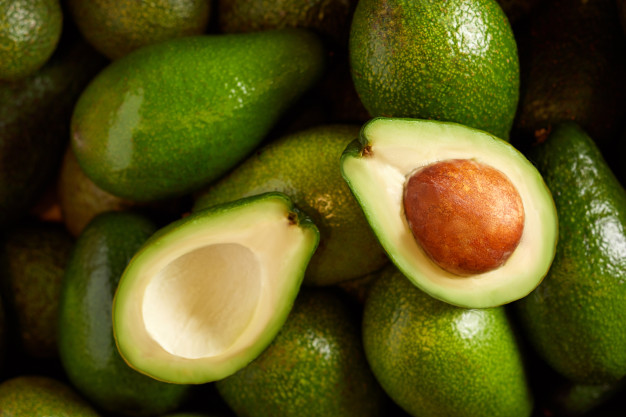top of mind news
- Can Ghost Kitchens Revive the Restaurant Industry?
- Coronavirus Liability Waivers Unlikely To Shield Restaurant Empoyers
- Meet The New Socially Distant Restaurant Experience
- As Restaurants Struggle, Cities Across America Consider Turning Streets Into Dining Rooms
- See Which States Are Reopening and Which Are Still Shut Down
Poultry
 For the week ending May 9th, total chicken slaughter escalated from the week prior, but fell 0.9% from the prior year. With bird weights up near 2% (y/y), total ready-to-cook (RTC) production jumped 1% over a year ago. Still, the six-week running total RTC broiler output was down 1.4% (y/y). Anticipate output declines to be seen later into the spring months. Tighter chicken inventories across the past six weeks are supporting prices, with the breast markets notching “V” shaped recoveries. Wing market increases are more modest. While price weakness was more the theme with chicken tenders lately, expect upside potential as restaurant demand rises going forward.
For the week ending May 9th, total chicken slaughter escalated from the week prior, but fell 0.9% from the prior year. With bird weights up near 2% (y/y), total ready-to-cook (RTC) production jumped 1% over a year ago. Still, the six-week running total RTC broiler output was down 1.4% (y/y). Anticipate output declines to be seen later into the spring months. Tighter chicken inventories across the past six weeks are supporting prices, with the breast markets notching “V” shaped recoveries. Wing market increases are more modest. While price weakness was more the theme with chicken tenders lately, expect upside potential as restaurant demand rises going forward.
Beef
Beef production continues to climb, with last week’s 526.2 million pounds being up 10.2% from the week prior but 23% below year ago levels. Anticipate this week’s output to rise another 10% or so. Beef prices have started to fall, with the back half of last week’s pricing coming in well below the record highs set earlier in the week. The end meats and grinds remain the most “at risk” for lower prices. Beef 50s are expected to fade also as production picks up, after last week’s ridiculous trading range of¬ $0.65 to $3.26. Heavier fed cattle carcasses should also pressure beef prices lower in the near-term.
Pork
Pork production rebounded sharply last week, up 19.1% from the week prior and was just 9.5% below year ago levels. While wholesale pork prices were choppy throughout last week, the higher production levels pressured several pork items lower. Large spot sales were noted throughout last week, but movement across the struggling ham primal was especially robust. Of interest, belly sales, while larger than year ago levels, were more modest relative to the remainder of the hog carcass. Belly prices fell sharply and are expected to continue fading.
THE SEA
Seafood
During March, U.S. snow crab imports were 12.5% bigger than last year however import prices remained historically inflated. The Canadian snow crab fishing season is off to a late start due to COVID-19. The Newfoundland quota this year is 29.6 thousand metric tons which is 10% bigger than last year but still historically small. Slack food service demand is expected to temper any upside in the snow crab markets for the next several months.
THE GARDEN
Produce
The avocado market has softened during the last several weeks as supplies from both Mexico and California improve. Imports from Mexico have been trending near 25% above 2019 levels as of late. Expectations are that avocado supplies may continue to improve in the near term which could weigh on the markets. The potato markets are mixed with larger sizes firm due in part to government purchases. Supplies are seasonally limited. This factor and improving food service demand are likely to underpin potato prices into the summer.
THE KITCHEN SINK
Dairy
After setting multi-year lows last month, cheese block and barrel prices have risen sharply. Butter prices have increased as well. U.S. government relief (covid-19) purchasing of dairy products are supporting prices. Plus, an uptick in regional restaurant operations is boosting cheese and butter demand. The USDA last week revised their 2020 domestic milk production forecast higher and is expected to be 1.8% more than 2019. This is good news and should support cheese and butter manufacturing and raise inventories. Once U.S. government cheese and butter buying ends, lower dairy price action is anticipated.
Grains
The U.S. winter wheat crop is progressing. Although ratings are below a year ago they are still historically adequate. Domestic spring wheat planting is progressing as well but is behind due to adverse weather in the Northern Plains. The USDA expects world wheat supplies to improve which could temper any upside in U.S. prices.
Oil
Nearby WTI crude futures last week were the highest in nearly two months. The IEA reported recently that global energy demand is improving, and Saudi Arabia is cutting some of their crude oil output. Crude prices can still rise in the near term.













